As water treatment professionals at Cuttings Water Works in St. Cloud Florida, we routinely test water to see if the water treatment equipment in place is working as it should, or if it is the right type of equipment for the water chemistry at your home or business. It’s also very important to know what type of equipment is appropriate for the water conditions before installing a water system. So what do the numbers mean?
First let me say that Water conditioning companies do not test for some of the more detrimental contaminants that might be in the water such as lead, E. coli, coli-form bacteria, or salmonella. These and other contaminants can only be accurately tested for in a laboratory setting, and can be arranged for through the local health department at a relatively reasonable cost. What we test for are the characteristics like odor, color, hardness, iron Ph., and total dissolved solids.
Each of these measurements are expressed in various terms and values. Following is a brief definition of our testing terminology. We test for the following and express them each as indicated.
1-Hardness: is expressed in grains per gallon or GPG. It refers to calcium and magnesium salts. In amounts above 3-4 GPG. It is detrimental to plumbing and water using devices such as water heaters, or washing machines and more.
2-Iron: is expressed in parts per million or PPM. And It is just what it says it is, iron, often it is what is called clear or ferrous iron which means it cannot be seen until it comes in contact with air for a short period of time then it turns orange. In amounts of .4 PPM it will cause a brown stain on fixtures and laundry
3- Tannins: are expressed in color units, however most people simply look at it in a white container and express it as slight, moderate, or heavy. Tannins are decomposed plant life that occurs naturally in areas where there were large amounts of plants. It can be removed by using specific types of resins.
4-pH: This stands for potential of Hydrogen and is most commonly recognized as a measure of the degree of acidity or alkalinity it is measured on a scale of 1-14 with 7 being neutral, anything below 7 begins to become acidic and anything above 7 begins to become alkaline.
5-Total dissolved solids: This is expressed in parts per million or PPM. And is a measurement of the weight of solids dissolved in water. In the SW. Florida area, it is mostly chlorides or salt. This is the only test that we do that goes toward the drink-ability of water as it is a number that has a maximum contamination level (MCL) established by the environmental protection agency. The MCL. Is 500 PPM. Above this amount water should not be consumed, in higher amounts perhaps in excess of 1000 PPM. The water becomes corrosive and can be detrimental to plumbing, plumbing fixtures and any water using appliance. TDS can be removed by installing an appropriate drinking water device so the water becomes safe to consume.
Water quality is a challenging subject for most home owners and business owners. Calling someone that truly understands the community you live in is imperative to understanding your water treatment or water well needs. Bryan Cuttings lives and works in St. Cloud Florida and has spent his life in the water well repair and water treatment business.
Call Bryan Cuttings at Cuttings Water Works in St. Cloud at (407) 617-4103 for all your water well repair, water condition service, and well drilling needs in St. Cloud and around Osceola County Florida.


Recent Comments